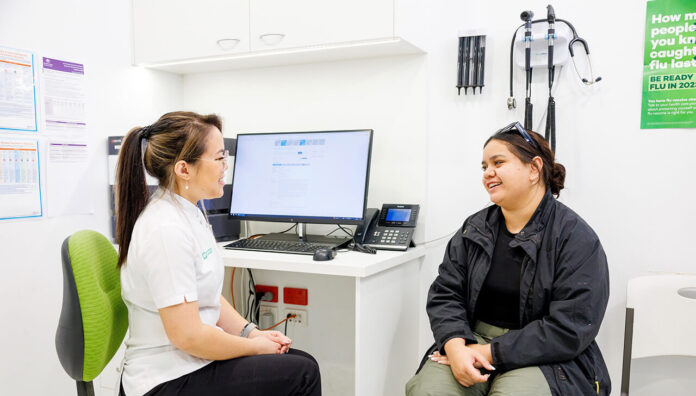On 1 July 2025, new vaping standards came into force for all therapeutic vaping products for smoking cessation and nicotine dependence.
The Therapeutic Goods Administration’s (TGA’s) strengthened standards, designed to reduce harm from vape use, are the culmination of the national vaping reforms, said PSA Project Manager Nikita Dalla Venezia, who worked closely on the PSA’s Professional practice guidelines for pharmacists: nicotine dependence support.
‘Because the changes were fairly substantial, my understanding is that they were staggered,’ she said. ‘This is just the next step of that comprehensive approach to mitigating risk for people who use therapeutic vapes.’
The principal purpose of the reforms is to minimise youth uptake of vaping – an objective that, according to the Cancer Council’s iterative Generation Vape study, appears to be succeeding.
‘In Wave 7 of the study, which came out after the reforms were introduced, over 50% of youths said they would decline a vape if offered one from a friend, which is a substantial increase from Wave 2 data (less than 40%) that was collected prior to the reforms,’ Ms Dalla Venezia said.
What key changes are introduced in the updated standards?
Changes to the packaging, labelling and design of vaping products have been introduced.
Vaping devices and accessories now need to appear as therapeutic products to reduce their appeal for recreational use among both adolescents and adults, Ms Dalla Venezia said.
‘The packaging needs to be plain, and the design has to be simple with very limited colours,’ she said.
New labelling, usage instructions and information leaflets are also required, along with name restrictions.
‘The permitted ingredients have changed, to now only include nicotine, propylene glycol glycerol, and water,’ she said. ‘And the only flavours allowed are mint, menthol or tobacco.’
Vaping devices and accessories must also meet stricter standards for:
- medical device quality
- risk management
- battery and electrical safety
- specific design and construction
- toxicological risk assessment.
What previously met the standards but now breaches them?
Concentrations of nicotine over 50 mg/mL. The permitted concentration of nicotine has now changed to a maximum of 50 mg/mL, so vapes exceeding this level cannot be supplied.
While the primary onus is on manufacturers of vaping products to ensure they’re adhering to the standards, pharmacists need to check that their stock is compliant.
How can I comply with the new standards?
By checking all vaping products in your pharmacy against the TGA’s Notified vape list, which has changed since the reforms were initiated last year, Ms Dalla Venezia said.
‘I understand that the TGA conducts compliance assessments as part of ongoing compliance monitoring for these products,’ she said. ‘And since the reforms, a number of those items have been withdrawn.’
Therapeutic vaping products on the list of notified vapes have not been assessed by the TGA for quality, safety, efficacy or performance. But product sponsors must notify the TGA that their good complies with the minimum requirements for notified vaping goods, adhering to the product standards:
- Therapeutic Goods (Standard for Therapeutic Vaping Goods) (TGO 110) Order 2021
- Therapeutic Goods (Medical Device Standard – Therapeutic Vaping Devices) Order 2023 (MDSO).
In addition to the notified vape list, there’s a separate database on the TGA website that pharmacists can check to see which products have been withdrawn or ceased.
‘If pharmacists suspect a product they have is no longer consistent with these changes, they can look at that withdrawn database,’ Ms Dalla Venezia said. ‘These lists can also be filtered by date.’
It’s also important to educate all pharmacy staff to ensure they are aware of the strengthened product standards, product compliance and availability – and alternative brands.
Do the changes apply to both prescription and Pharmacist Only vapes?
Yes. All therapeutic vapes, whether prescribed or supplied after a consultation with a pharmacist, must comply with the new standards.
To ensure a smooth transition, pharmacists should communicate with prescribers – and patients – about the changes to vaping product standards, and available products.
‘The federal Department of Health, Disability and Ageing is continuously monitoring the products on the list and making sure that they adhere to the standards for vaping products,’ Ms Dalla Venezia said.
‘So it’s a good idea to take note of all of your inventory, and if there’s anything you know you’re dispensing on a regular basis, cross reference it with the notified vape list.’
For more information on prescribing and dispensing vapes, refer to these PSA checklists:
- Pharmacist Workflow for Prescribing and Dispensing Therapeutic Vapes
- Pharmacist Workflow for Dispensing Nicotine Vaping Products.
Can I sell my existing products until the stock is exhausted?
Only if it’s on the notified vape list. Since the standards came into effect last week on 1 July, all supplied vaping products must adhere to the new requirements.
Pharmacists should contact the manufacturer of non-compliant stock, Ms Dalla Venezia said.
‘The TGA has directed pharmacists to return non-compliant products to the supplier,’ she said. ‘If they’re not able to return the products, they should dispose of them as per their state or territory regulations.’
Do the new standards mean vapes are now first-line therapy?
Vapes are absolutely not the first-line treatment option for smoking cessation, Ms Dalla Venezia emphasised.
‘PSA’s recommendations and guidelines haven’t [needed to] change in response to the standard changes,’ she said.
The recommended pathway for smoking cessation includes:
- Behavioural support: essential for all patients attempting to quit smoking, either alone or in combination with pharmacotherapy
- First-line pharmacotherapy:
- Nicotine Replacement Therapy (NRT) – patches, gum, lozenges, mouth spray
- Varenicline
- Bupropion
Using combination NRT with behavioural support is more effective than NRT monotherapy.
Although therapeutic vapes are not first-line therapy for smoking cessation, the use of a therapeutic vape from the list of notified vapes is considered to be less harmful than smoking, Ms Dalla Venezia said.
‘We don’t want people to fear considering therapeutic vapes if they’re therapeutically appropriate,’ she said. ‘They are still an option for people who have gone through all the approved, first-line NRT steps and still are not able to quit smoking.’
Is there a first-line therapy specifically for vaping cessation?
Not definitively, Ms Dalla Venezia said.
‘There isn’t a substantial body of evidence for vaping cessation at the moment,’ she said. ‘But within the PSA guidelines, we take the same approach to vaping as we take to smoking cessation.’
That means pharmacists should recommend combination NRT for vaping cessation as the most effective first-line treatment option.
‘As evidence evolves, we’ll continue to revisit the guidelines. But that’s the best approach that we have with the evidence that’s available to us at the moment,’ Ms Dalla Venezia said.
‘As recreational vapes are becoming less accessible, a new subset of the population who are nicotine dependent through vapes as the medium are going to need ongoing support from pharmacists.’
Historically, Australia’s tobacco control and marketing around the harms of smoking have been successful, however they no longer reach the primary demographic – youth.
To engage young people aged 14–17 on a platform they actually use through people who speak their language, the federal Department of Health, Ageing and Disability engaged 10 influencers – one of which alone has 1.7 million followers on Tiktok in that age bracket.
‘It’s a really great opportunity to reach young people because that’s the group of people who were beginning to use vapes at such rapidly increasing rates,’ Ms Dalla Venezia said.
Pharmacists should refer to the TGA vaping hub for a comprehensive overview of all changes.
Keen to learn more about smoking and vaping cessation? Attend the ‘Clearing the air on smoking and vaping cessation’ workshop at PSA25, held in Sydney from 1–3 August. Register here to attend.





 Dr Phoebe Holdenson Kimura[/caption]
Dr Phoebe Holdenson Kimura[/caption]
 High-quality medicines reconciliation should ideally occur in the emergency department or soon after admission to the ward.
High-quality medicines reconciliation should ideally occur in the emergency department or soon after admission to the ward.
 AP
AP





